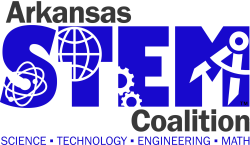Introduction to Modeling Methods Course, January 14 – April 21, 2020. This course is designed as a first exposure to Modeling Instruction.
What are conceptual models? What is modeling? What is Modeling Instruction – what is it like for teachers? For students? How does it work? Why does it work? What does it have to do with NGSS?
This distance learning course, Introduction to Modeling Instruction, will take on these questions and more in a 15-week distance learning format that meets once weekly, three hours per meeting. We will delve into the cognitive underpinnings of Modeling Theory – reading about some of the seminal theories upon which it is based, engage in Modeling discourse and practice discourse management, watch videos of Modeling classrooms and make sense of student thinking by watching them whiteboard and listening to them talk with each other. We will look at how Modeling uncovers the spectrum of middle and high school science topics, exploring the storylines from the various disciplines, discussing the fundamental models of each of these disciplines with expert Modelers from physics, chemistry, biology, and middle school science. This is not a Modeling Workshop, but by the end of the course you will have a solid grounding in model-based cognition and instruction, and a working knowledge of how Modeling Instruction unfolds in the secondary science classroom.
The Distance Learning course can be taken for graduate-level credits (for an additional fee) or you may earn a professional development certificate.
The instructors for this course are Janelle Hollingshead (IL) and guest leaders Nathan Harada (IL) for Physics and Chemistry and Tanea Hibler (AZ) for the biology portion.
Full payment must be received by January 10th, 2020.
Date: Tuesdays from 7:00 pm – 10:00 pm (EST)
Duration: 15 weeks, January 14 – April 21, 2020
Costs: $750 for current AMTA members; $825 for non-members (includes a 1-yr AMTA membership)
Optional Graduate Credits: 3 credits from University of Pacific are available for $79/hr ($237 total).
Meet our Instructors
Tanea Hibler: After living in Asia for 6 years, Tanea returned to the US to teach at Brophy College Preparatory in 2015. She previously taught at the Wells International School in Bangkok, Thailand, and then taught science for four years at Concordia International School in Shanghai. Prior to moving to Asia, Mrs. Hibler taught science in the Buckeye Union High School District. She earned a Bachelor of Science in Biology from California State University – East Bay, a Masters of Education from ASU, and a Masters of Science in Teaching Earth Science from Wright State University. Tanea took her first modeling class in 2008, and has spent the past 2 summers co-leading the Phoenix Biology Modeling workshop. Tanea also serves as a member-at-large on the board of the American Modeling Teachers Association. Tanea loves working with teachers, presenting at conferences, and advocating for diversity in the field.
Janelle Hollingshead: I have been a chemistry teacher for 12 years, a physic teacher for one year, and this year I am teaching 9th grade physical science, 11th grade chemistry, and 11th and 12th grade physics. I have taught a wide range of grades, subjects, and cultures. For 12 years in Chicago I co taught 2 – 3 periods a day with a special education teacher. I taught for 13 years in Chicago public schools at Lane Tech and this year I am teaching at Sevastopol School which is a small rural pre k – 12th grade school in Door County WI. I hold a BA in music, BS in chemistry, MA in education, NBCT, and I hold a special ed endorsement. I have attended modeling chemistry, modeling physics, and modeling physical science workshops. I have taught modeling physical science, modeling chemistry, modeling physics mechanics, and most of the modeling electricity and magnetism curriculum. I love to sing, mountain bike, bike to school, and hang out with my kids.

